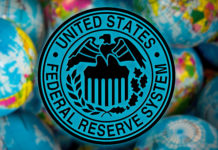Markets
Sign of the times. Last week’s surprising hawkish 25 bps rate hikes by the Reserve Bank of Australian and by the Bank of Canada upped the ante going into this week’s monetary policy meetings by the Fed and by the ECB. The RBA and the BoC both paused their policy normalization cycles earlier this year, only to conclude that their efforts proved to be insufficient still. As the BoC put it the most clearly: “monetary policy was just not sufficiently restrictive to bring supply and demand back into balance and return inflation sustainably to the 2% target.”
Their decisions helped shape expectations for the Fed’s June & July policy decision. The market is on the skip and hike scenario put forward by several heavyweight Fed governors, discounting a 1/3 probability of a hike this week, while it is fully discounted by July. With June CPI figures (tomorrow) still to be released and with a large minority already in favour of continuing the tightening cycle, there’s a tail risk scenario to see a last-minute change of heart at the Fed nonetheless. We’ve seen the same thing happening early in the normalization cycle when eco data in the week running up to the meeting overturned guidance to hike by 50 bps to conduct a 75 bps hike instead. The Fed decision will be flanked by a new Summary of Economic Projections including an updated dot plot which will show a higher peak rate than in March (5-5.25%) and possibly also a higher policy rate level for end 2024 (current median 4.25%). Reasons include ongoing tightness in the labour market, economic resilience, an already bottoming out housing market, a retightening of financial conditions as the impact of the regional bank crisis petered out and (core) inflation stalling at elevated levels.
The ECB on Thursday is expected to deliver on its May promise of more tightening. A 25 bps rate hike is discounted. Lagarde at the previous meeting namedropped June, July and even September meetings for more action to achieve a timely return of inflation to the 2% target. At the press conference, she might remain tightlipped though when it comes to the future. She’ll stress that the ECB’s complete halt of reinvestments under the APP programme will kick in next week. Over the next 12 months, this suggests that an additional €160bn of liquidity will pulled from the market. These amounts will gain traction in coming years given the way the €3200bn APP portfolio was built mainly during 2016-2018 (average maturity of APP portfolio rapidly declining). Their impact at first will likely be seen via swap spreads vs govies rather than be outright felt in yield levels. Finally, the ECB will likely want to see the impact of the big TLTRO repayment at the end of June (€476.8bn).
The People Bank of China and Bank of Japan are on duty as well this week. A status quo is expected for both, with last Friday’s stories suggesting that the BoJ is in no rush to further increase the tolerance band around the 0% YCC target for the 10y yield. Risks to the PBOC outcome are on the easing side as the Chinese central bank might start cutting to pull borrowing costs lower and give a helping hand to the economy.
News and views
In an interview with the Hospodarske Noviny newspaper, Member of the Czech National Bank MPC Holub said that while raising rates further now would be too late curb price pressures in the first half of next year, it still will have a signaling effect helping to anchor inflation expectations and prevent a wage-price spiral. At the same time, he indicated that the CNB might be able to start with gradual and probably cautious rate cuts in the first half of next year unless a wage-price inflation spiral was to develop at that time. Holub is a hawkish member of the MPC. However, at the previous meeting he was joined by two other members in a close 4-3 vote to leave the policy rate unchanged at 7%. The next CNB meeting is scheduled on June 21. Czech inflation in April slowed to 12.7%. Y/Y. May CPI inflation will be published later today.











